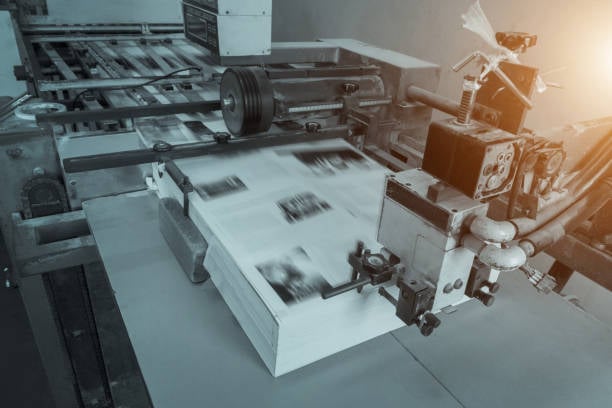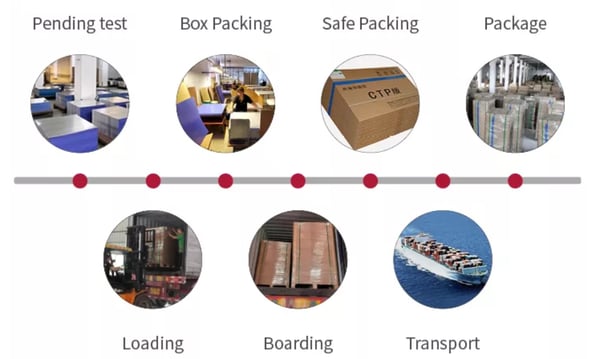In a variety of various industries, offset printing is one of the most widely used printing techniques, if not the most widely used.
It produces outcomes of the greatest caliber and greatly enhances the worth of goods, packaging, or publications.
But how does it actually operate and why should you take this into account for your packaging project?
What Makes Offset Printing Unique
A typical misunderstanding about printing is that it is always as easy as clicking "print" on a computer and waiting a few minutes for a tidy stack of freshly printed paper. It takes a bit longer to set up and complete many professional printing jobs properly in order to get the best details, colors, and results. Included in this is offset printing, one of the most beautiful but sometimes misunderstood printing techniques.
Most of us see printers directly embedding an image onto paper when we think of the printing process. Offset printing functions differently and has its roots in lithography, a printing technique that was invented in 1796 as a practical way to print plays. Even though modern lithography, also known as offset printing, has advanced greatly since the 18th century, it still relies on the fundamental tenet that oil and water don't mix.
The ink rollers on the printing press transfer ink from the image file straight onto a printing plate during the offset printing process. After plating, the non-image parts become water receptive and ink-repellent while the image areas become ink receptive and water-repellent. This guarantees that the region that is not an image is ink-free. On the press, the picture is transferred from the plate to a flexible rubber sheet. The picture is then imprinted onto the paper as it passes through the press, sandwiched between the rubber sheet and the impression cylinder. Because the ink is offset to the rubber blanket before moving on to the paper, this printing method is referred to as "offset."
Expectations for Offset Printing
The clean, sharp lines and details on offset projects frequently require a level of precision that can't be matched by other printing techniques, despite the fact that offset printing may seem dated. With offset printing, we can produce a great volume of work quickly. In spite of the fact that once it is configured, the offset process operates as efficiently as possible, setting up an offset operation does take a bit longer to master. We want to get the plates, rubber blanket, and image exactly right in the printing press, so a little extra lead time could be required to execute the work properly.
Choosing offset printing over digital printing has the following benefits:
- Printing in bulk can be done for less money.
- In contrast to other printing techniques, the more printings you make, the more affordable it becomes.
- Jobs can be completed using either CMYK or black.
- Offset offers the best printing quality available with perfect detail and color balance.
- HUIDA will talk with you about this during the planning process and work closely with you to ensure you have what you need and when you need it. The anticipated turnaround time for an offset job varies on the specifics.
The Process of Offset Printing
- The picture, text, and graphics are quickly deposited on a "plate"—typically a sheet of metal, though paper or polyester can also be used.
- The plate is transported to a rubber roller or cylinder for offset printing, which is the major event. If both sides of the paper need to be printed, two plates will be used in the process.
- The paper is subsequently fed into the press by the roller. To produce a high-quality color output and quality, the rubber cylinder containing the ink for your artwork design stamps or "prints" onto the paper.
Benefits from Offset Printing
- High quality and true color: Offset printing employs ink rather than toner, thus the print is much richer and clearer as a result.
- Low cost: Offset printing works best for printing in medium to large quantities. The cost per unit decreases when more products are produced.
- Web-fed printing is quick and effective, producing over 80,000 copies of high-quality printed goods.
- Offset printing is adaptable and dynamic, offering answers to particular finishing requirements and other design requests while working on a variety of materials like paper, cardboard, wood, leather, and plastic.
Which Objects Are Best for Offset Printing?
Projects requiring a long run generally benefit from offset printing, such as:
- Stationery
- Books
- Brochures
- Magazines
- Newspapers
According to our clients, Huida Offset printing has been very successful for these kinds of projects thanks to our top-notch Thermal CTP plates and UV CTP plates. Get in contact with us to learn more about offset printing's advantages and to see whether they might apply to your forthcoming project.


